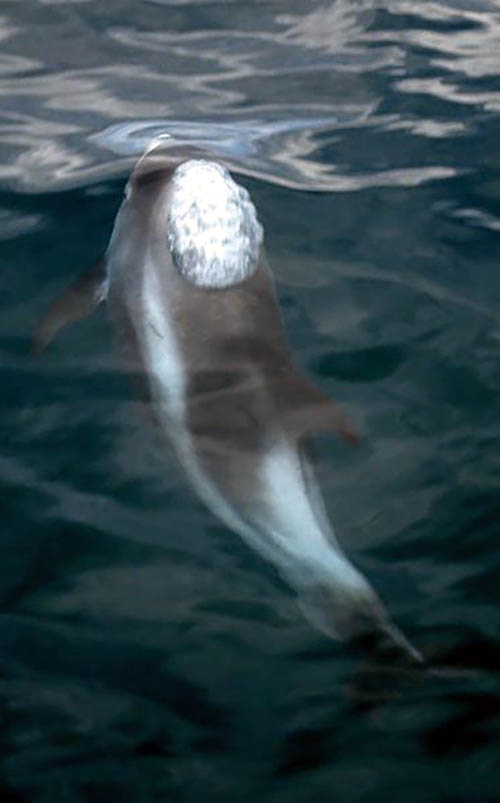DOLPHINS on the east and west coasts of Scotland have different “accents”, scientists have discovered.
Researchers found that Scottish dolphins – just like their human neighbours living 50 miles apart on dry land – “speak” differently.
The white beaked dolphins hunt using a complex system of tail slaps, whistles and clicks which were previously believed to be common among the species.
Researchers believe the differences in clicking noises that have been discovered between North Sea and Atlantic dolphins could reflect the different prey they hunt.

The research, commissioned by Scottish Natural Heritage (SNH) and carried out by Hebridean Whale and Dolphin Trust (HWDT), will be published later this month.
Olivia Harries, biodiversity officer for the HWDT, said they had discovered that the dolphins use different “accents” while hunting.
“They use different clicks on the east coast than those on the west coast,” she said.
“We’ve found that they are using a different technique to what we first thought to locate their prey and for orientating around.”
She asked: “What’s the exact function of that? Does that mean that they’re feeding differently others on the east coast with their significantly different clicks?
“That all needs to be considered in trying to manage them on our west coast. It’s important that we understand so we can effectively observe them and learn more.”
The researchers believe the work will help them understand exactly what the dolphins are eating on the east and west coast.
And that should help experts manage food stocks in the waters around Scotland to help ensure the dolphins’ survival.
The white-beaked dolphin is a sturdy mammal that can reach up to three metres in length.
But little is known about the size of the population, their breeding patterns or lifespan.
They are thought to eat a variety of fish, squid and crustaceans.
White-beaked dolphins, which are protected, are usually found in temperate, subarctic waters and the Hebrides.
Unlike common dolphins, they prefer open waters further from the coast but enjoy playing with
It is not the first time researchers have found “accent” differences between the same species living in different areas.
In 2011, scientists found that birds, like human beings, also have regional accents.
There was found to be a noticeable difference in pitch between our town and country feathered friends.
Cows are have slightly different moos, depending on where they’re from.
Among humans in Scotland, the differences between east and west coast have been extensively researched.
But a recent study by Glasgow University found that many Scots youngsters were showing signs of a “cockney” accent as a result of watching Eastenders.

